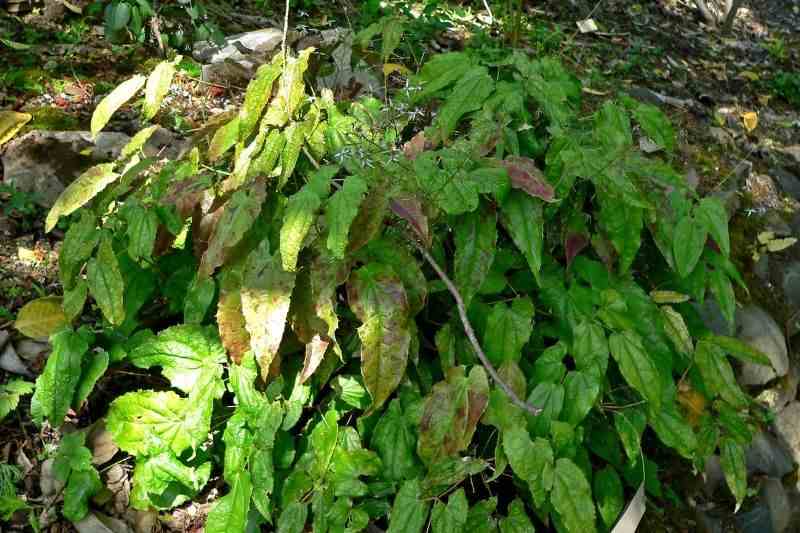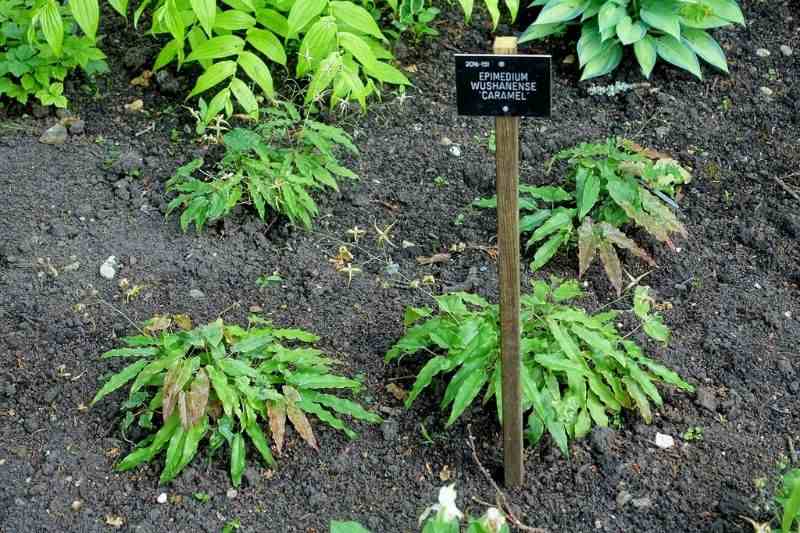Epimedium is a very effective groundcover plant for shade or partial shade. Valued for its decorative foliage colours, it spreads via its rootstocks. After a few years, the epimedium becomes exhausted and flowers are less numerous. It is then time to think about dividing the stump to reinvigorate the plant. Discover all our tips to successfully divide your flower of the elves.
Why divide epimedium?
Each year, perennial plants’ stumps increase in size and after several years in the ground, flowering is less abundant. In addition, a bulky clump can interfere with perennial plants planted nearby. Dividing the stump restores vigour to epimedium, stimulates growth and produces many flowers again. Dividing the stump is also the best way to multiply epimedium.

Dividing the rootball helps reinvigorate a poorly flowering plant (photo Wikimedia).
When to divide epimedium?
You can divide your flower of the elves once it reaches 3–4 years old. Epimedium grows rather slowly, so there is no need to divide it before that stage. Preferably carry out division after flowering: late summer/early autumn. September is ideal. At that time the plant enters dormancy, making division less traumatic. Note that you can then multiply your epimediums every 2–3 years.
It is also possible to divide epimediums in late winter/early spring (March or April), but there are two drawbacks: frosts are still possible at that time and watering must be very regular in the following months, especially during hot summer periods, because these clumps are still fragile.
How to divide epimedium?
Required equipment :
- a spade or digging fork
- a sharp knife or pruning shear
- a watering can
- some compost
- some mulch
The division :
Tip: if your soil is hard, water it first to make the job easier.
- Mark a wide circle around the stump of your epimedium using a spade or digging fork. To do this, insert the tool vertically all around the plant.
- Slide the spade under the rootball and lever it out. If necessary, free the last roots in the ground by hand. Gently shake the rootball to remove excess soil and lay it on its side.
- Using the spade, your knife or pruning shear (depending on density of the root system), break the epimedium rootball into several large sections, each containing shoot bases, roots and at least one rootstock of around ten centimetres.
- Clean the fragments by removing damaged roots and dead foliage.
Your epimedium divisions are ready to be replanted.
How to transplant an epimedium?
Replant your small epimedium clumps in new locations without delay:
- Dig planting holes spaced about 30 cm apart;
- Work the soil at the bottom of the holes so it is friable;
- Add some well-rotted compost;
- If the soil is heavy in the chosen spots, lighten it by adding river sand and mix;
- Place the rootball sections in the holes and cover with soil;
- Firm down and water generously;
- To protect epimediums from winter cold, place a layer of mulch at each plant, for example straw.
You can also pot up the sections individually, but pots must then be kept frost-free over winter.

Transplanted epimedium rootballs set at a good distance do not compete with each other (photo Daderot - Wikimedia).
Further reading
- Find our full epimedium range on our site
- See our fact sheet to learn all about the Epimedium, Flower of the Elves: planting, growing and care
- Discover our advice to regenerate epimedium foliage
- We offer some ideas to combine epimediums
































Comments